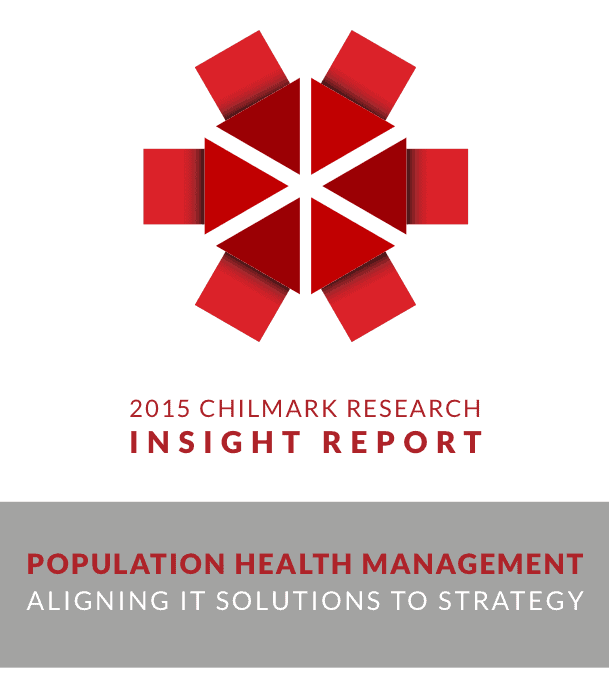
There are a number of challenges that stand in the way of healthcare organizations’ (HCOs) adoption of PHM-centric strategies. Few HCOs have the requisite expertise in PHM and the technology infrastructure to support this transition. The dynamic shift from fee for service (FFS) to value-based reimbursement (VBR) models leaves providers in the difficult situation of having to invest in PHM for the future with little if any near-term returns on invest- ment (ROI). Lastly, the IT solutions that will be needed to support PHM initiatives remain immature and require HCOs to take a portfolio approach to investing in a range of best-of-breed solutions to support their PHM strategy. No single vendor today can offer a comprehensive PHM solution suite, though countless vendors will try to convince HCOs otherwise.
For the purposes of this report, Chilmark Research defines population health management as:
The proactive management of the health of a given population by a defined network of financially linked providers in partnership with community stakeholders (eg, social workers, visiting nurses, hospice, patient, caregivers/family, etc.).
Within that short definition there are three important concepts. The first is that providers move from the current passive manage- ment of patient and population health to a proactive model. Secondly, PHM occurs among a defined provider network that is financially linked, in most cases via a contract with a payer or self-insured employer entity. Lastly, the care team extends beyond the provider(s) to include a community network of stakeholders that play a role in the care of a patient.
While HCOs have a preference to adopt solutions from their leading IT vendor – typically the EHR supplier – Chilmark found most EHR companies to be slow in responding to this demand and lagging best of breed solutions. There is the added challenge that while the EHR is critical to PHM initiatives, this report found it unlikely that EHRs will ever be the core solution for PHM.
This is resulting in growing opportunities for best-of-breed vendors to take the lead in providing solutions that address specific PHM enabling requirements, including analytics, clinician network management, care management and patient engagement. Best of breed vendors, as well as EHR vendors, are all expanding their breadth of capabilities in the hopes they will eventually become full-suite PHM vendors. Buy, build, and partner strategies undertaken by leading vendors will culminate in a complete PHM solution suite that is nearly comparable to a best of breed portfolio approach, but Chilmark forecasts that this is unlikely to occur until sometime between 2018-2020 at the earliest.
To compile this comprehensive, fifty-plus-page research report, each member of Chilmark’s analyst team contributed sections that provide deep dive analysis into best of breed solution domains and their respective contribution to enabling an HCO’s PHM strategy. The report further articulates how HCOs will be required to migrate their IT architecture from one that is primarily based on a ‘systems of record construct’ to one that focuses on ‘systems of engagement’ to support 360-degree engagement, which will enable all stakeholders to contribute to the health of a community. Cloud-based engagement solutions with strong messaging features will see strong adoption – others, far less so.
The report findings will provide strategic insight to all interested parties that wish to understand how the PHM market will evolve over the next several years. Healthcare organizations, healthcare IT vendors, consultants, investors and others will all benefit from the in-depth research that this report reveals on what is today the top-of-mind issue for all healthcare C-suite executives: How will our PHM strategy allow us to successfully compete in the years to come?
Pages in Report: 51




0 Comments